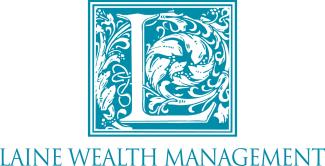
Understanding 401(k) Loans
Defined contribution plans, such as 401(k) plans, are the most popular employer-sponsored retirement plan in the United States. According to recent statistics provided by the Investment Company Institute, there are about 600,000 401(k) plans in the U.S., covering approximately 60 million active participants and millions of former employees and retirees.
And while each 401(k) plan is structured basically the same, each plan offers different tools for employees. One tool that is often – but not always – offered is the ability to allow participants (employees) to borrow a portion of their account balance.
Let’s examine the benefits and drawbacks in simple terms:
The Benefits
- Paying You. When you pay your 401(k) loan back, you are, in effect, paying interest to yourself. It all goes back into your account.
- In practical terms, if the interest rate you are paying yourself equals or exceeds the rate of return you are earning on the unborrowed portion of your account, you are not hindering the long-term growth of your 401(k). Unfortunately, there is no way to know this with any certainty.
- Easier Access. Often times, a loan from your own 401(k) is just easier for you because there are no credit checks or as many hassles compared to more traditional loans. However, there will be paperwork to fill out and it usually takes time to process, so don’t expect to receive your loan proceeds the next day.
The Drawbacks
- The interest portion of loan repayments usually is not tax deductible.
- These loans have limits and they are usually short-term.
- Amounts not repaid on time will be viewed as taxable withdrawals by the Internal Revenue Service and may be subject to penalties.
- If you leave the company, your employer may demand full repayment within 60 days; you might owe taxes (and possibly penalties) on the unpaid balance.
- Fees. There are usually a variety of loan costs, in addition to interest – just like most other loans. These might include origination or administration fees and they can add up quickly.
- Missing out on market returns. As mentioned earlier, if the interest rate you are paying yourself equals or exceeds the rate of return you are earning on the unborrowed portion of your account, you are not hindering the long-term growth of your 401(k). However, the opposite is true because the cash you borrow does not earn the market rate that would have been accumulated if the money had been left in the account, which could be higher (depending on how the market performs and the investments selected of course).
- Less retirement readiness. Taking a 401(k) loan will usually hurt your retirement nest egg from a psychological perspective. In fact, Fidelity Investments found that borrowers contribute an average of 2 percent less to their 401(k) plans while paying off the loan and for two years beyond the loan repayment date.
The Choice is Yours
If you need to borrow money for some unforeseen event, you should consider all credit sources available to you and select the source best suited to your needs. Tapping into your 401(k) plan might be the right decision for you, but consider all your options first.
And talk to a financial professional.
Important Disclosures
The opinions voiced in this material are for general information only and are not intended to provide specific advice or recommendations for any individual security. To determine which options may be appropriate for you, consult your financial professional.
All information is believed to be from reliable sources; however LPL Financial makes no representation as to its completeness or accuracy.
This article was prepared by RSW Publishing.
LPL Tracking #1-05246421

